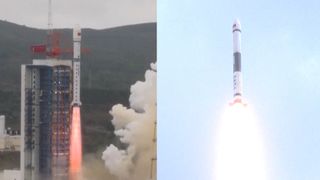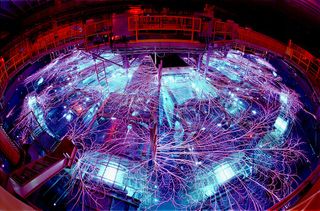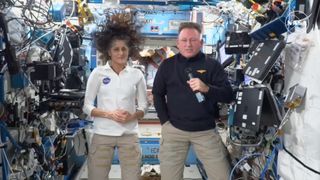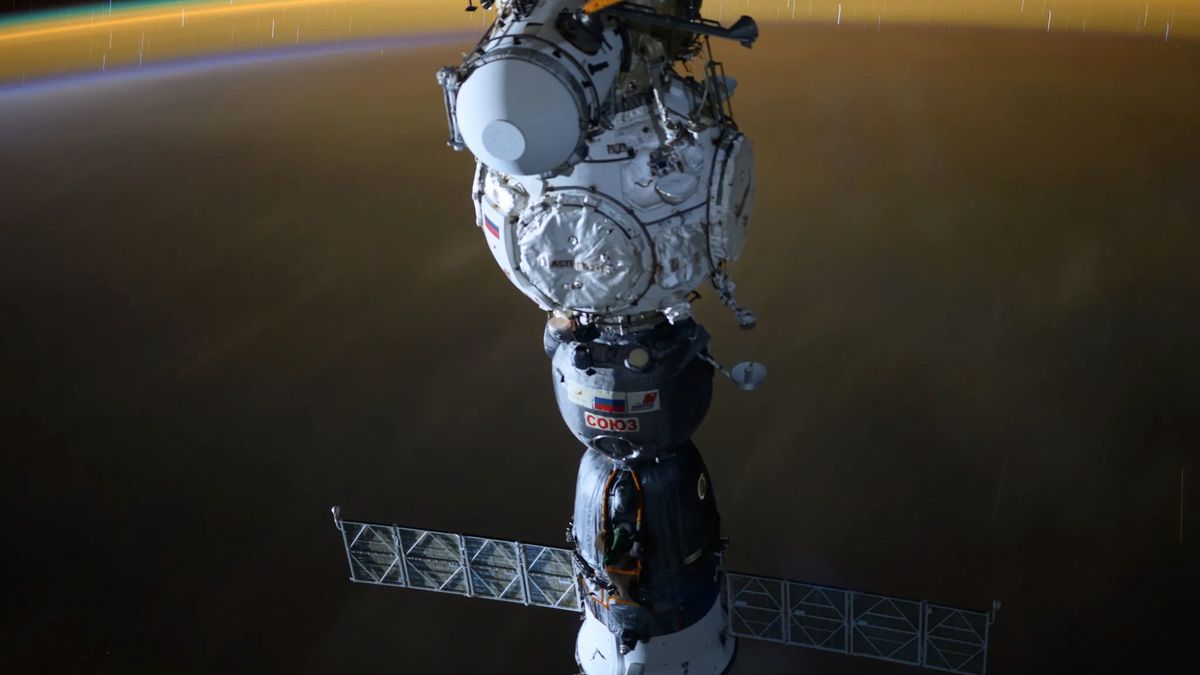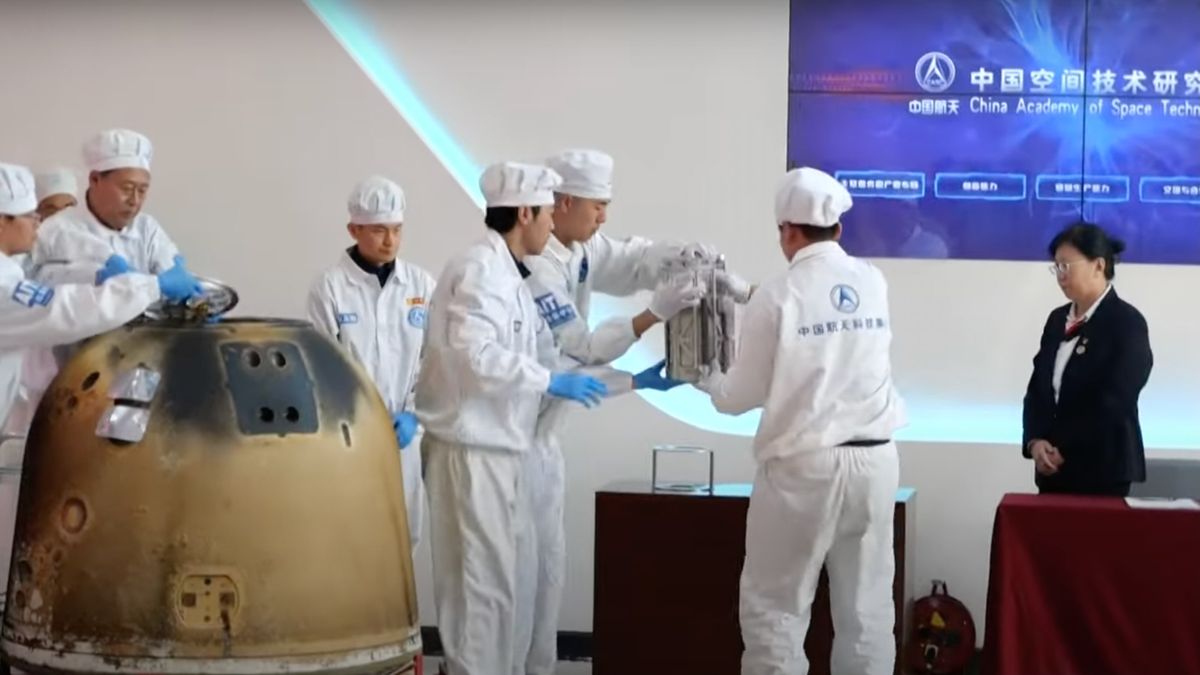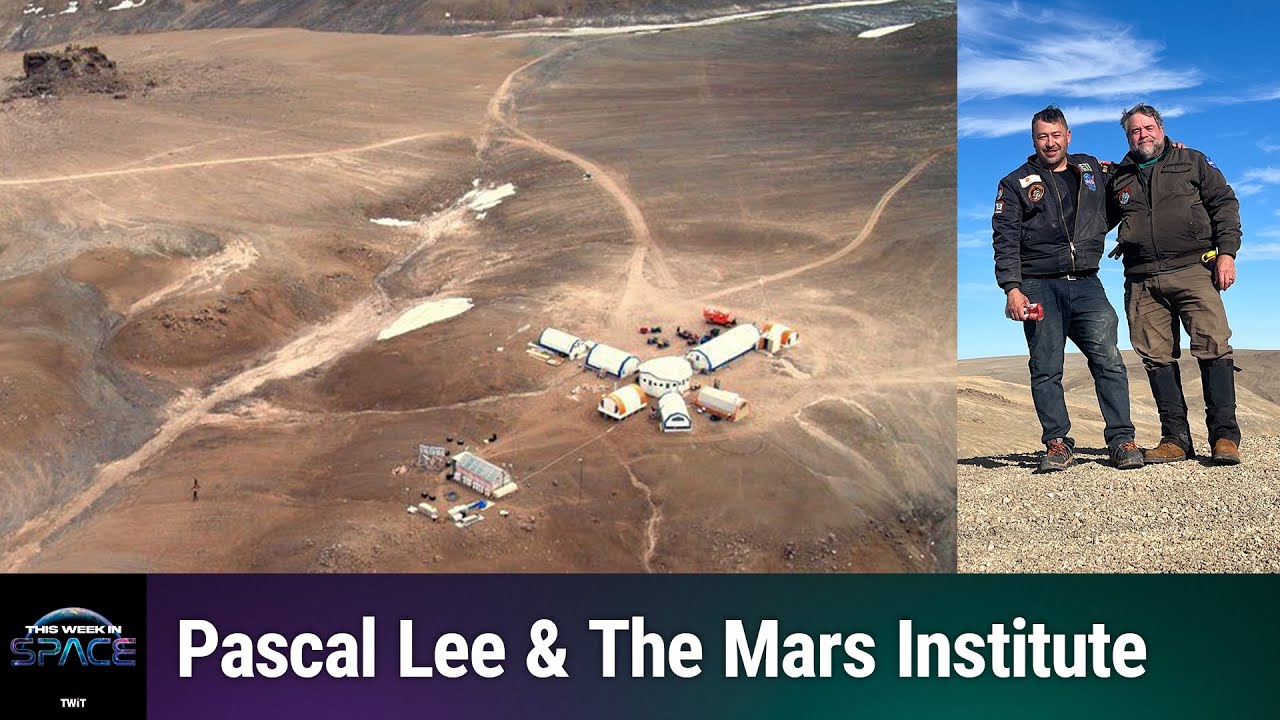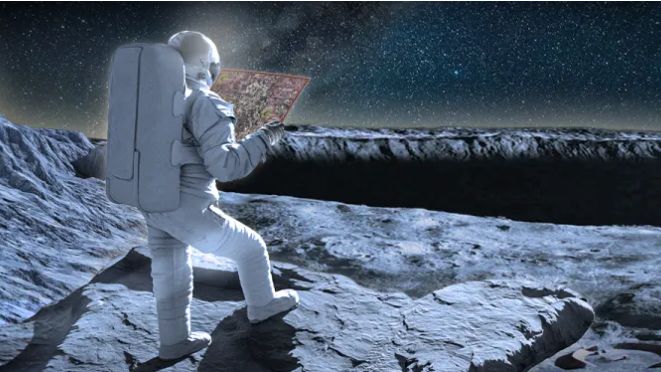SpaceX has pulled some pieces of its Starship megarocket from the sea. On Sunday evening (Sept. 22), SpaceX founder and CEO Elon Musk posted on X a photo of dripping and damaged rocket hardware being lifted out of the ocean. The mangled metal is part of the first-stage booster that flew on the most recent Starship test flight, Musk said. “Like the ruins of a futuristic, long-dead civilization,” he wrote in another post a few hours later. SpaceX is developing Starship to get people and payloads to the moon, Mars…
Read MoreCategory: Solar System
Our solar system
China launches 10 satellites on 2 rockets less than 6 hours apart (video)
China launched separate sets of Earth-observation and “Internet of Things” satellites into orbit on Friday (Sept. 20) on two different missions. The action began at 12:11 a.m EDT (0411 GMT, or 12:11 p.m. Beijing time) on Friday, when a Long March 2D rocket lifted off from Taiyuan Satellite Launch Center in northern China. Insulation tiles fell away from the rocket’s payload fairing as it climbed into cloudy skies above the spaceport. Aboard were six remote-sensing satellites for Changguang Satellite Technology (CGST), a commercial spinoff from the Chinese Academy of Sciences.…
Read MoreX-rays from a nuclear explosion could redirect an asteroid
When asteroids hurtle towards Earth in Hollywood films, astronauts often deploy nuclear warheads against them in order to save humanity. Now, scientists have found this strategy could actually help deflect an incoming cosmic impact — not by blowing an asteroid up with a nuke, but by exploding one more than a mile above its surface to shower it with X-ray radiation. As the catastrophic end of the Age of Dinosaurs about 66 million years ago reveals, cosmic impacts can have disastrous effects for life on Earth. “Asteroids aren’t just history…
Read MoreSpaceX’s Crew-9 astronaut flight for NASA launches this week. Here’s how it turned into a rescue mission
This week, NASA is sending up a rescue mission to the International Space Station. On Thursday (Sept. 26), NASA astronaut Nick Hague and cosmonaut Aleksandr Gorbunov of Russia’s space agency Roscosmos will launch to the International space Station (ISS) on SpaceX’s Crew-9 mission. Two other NASA astronauts, Zena Cardman and Stephanie Wilson, both mission specialists, were supposed to be aboard as well. But Wilson and Cardman were cut from the flight in order to make room for two other NASA astronauts, Butch Wilmore and Suni Williams, who are currently stuck…
Read MoreHow Canada is preserving what remains of its iconic supersonic Avro Arrow jet
Six decades after the supersonic Avro Arrow suddenly stopped flying, Canada is working hard to preserve what few pieces of it are left. The Avro Canada CF-105 Arrow (known as the Arrow among its fans) was one of the most advanced supersonic jets of its era in the 1950s. It even has a link with NASA across the border, according to the Canadian Encyclopedia. But the Arrow program’s funding was nixed in 1959 in a still-controversial decision by the Canadian government of the day, led by Prime Minister John Diefenbaker.…
Read MoreWatch NASA astronaut, 2 record-breaking cosmonauts head home to Earth on Sept. 23
A NASA astronaut and two record-setting Russian cosmonauts are set to head back to Earth on Monday (Sept. 23), and you can watch their homecoming live. Russia’s Soyuz MS-25 spacecraft, with Tracy C. Dyson, Oleg Kononenko and Nikolai Chub aboard, is scheduled to undock from the International Space Station (ISS) on Monday at 4:37 a.m. EDT (0837 GMT) and land on the steppe of Kazakhstan about 3.5 hours later. You can watch all the action live here at Space.com, courtesy of NASA, or directly via the space agency. NASA’s coverage…
Read MoreWhat the 1st analysis of China’s Chang’e 6 lunar far side samples revealed
We finally have a glimpse of the first-ever samples collected from the far side of the moon. The first paper on the samples collected from China’s Chang’e 6 lunar probe reveals that the specimens differ in some ways from those collected from the moon’s near side. Thus, they could provide fresh insights and lead to new theories about the moon and its evolution. China launched its complex, 53-day-long Chang’e 6 lunar far side sample return mission in early May. A lander scooped and drilled for samples inside an area known…
Read MoreThis Week In Space podcast: Episode 129 —Back From Mars!
Back From Mars! – Dr. Pascal Lee Returns to Discuss Recent Work at His Mars Simulation Base – YouTube Watch On On Episode 129 of This Week In Space, Rod Pyle and Tariq Malik talk with Dr. Pascal Lee about his Mars Simulation Base in the Arctic. Devon Island, a polar desert in the High Arctic, is one of the most convincing Mars analogs on Earth. That’s why Pascal Lee built his NASA-affiliated research base there. On this episode he returns to discuss his summer field work, Martian volcanoes, and…
Read MoreNASA invites public to design Artemis moon mission navigation tech
NASA is seeking the public’s help for innovative solutions to help Artemis astronauts navigate in and around the lunar south pole. The Artemis program aims to land humans on the moon for the first time since the Apollo missions managed to achieve the feat over 50 years ago. Astronauts will land near the lunar south pole, where permanently shadowed regions may contain areas of water ice that could be accessed to support future missions to Mars. The Lunar Navigation Challenge, which officially opened on Sept. 4, seeks ideas for a…
Read MoreBoeing Space & Defense chief Ted Colbert is leaving: reports
Boeing is getting a new space chief. Ted Colbert will no longer be CEO of Boeing Defense, Space & Security, one of the aerospace giant’s subdivisions, according to media reports. Those reports cite a staff memo circulated today (Sept. 20) by Boeing CEO Kelly Ortberg, who took the top job in August. “At this critical juncture, our priority is to restore the trust of our customers and meet the high standards they expect of us to enable their critical missions around the world,” Ortberg said in the memo, according to…
Read More
